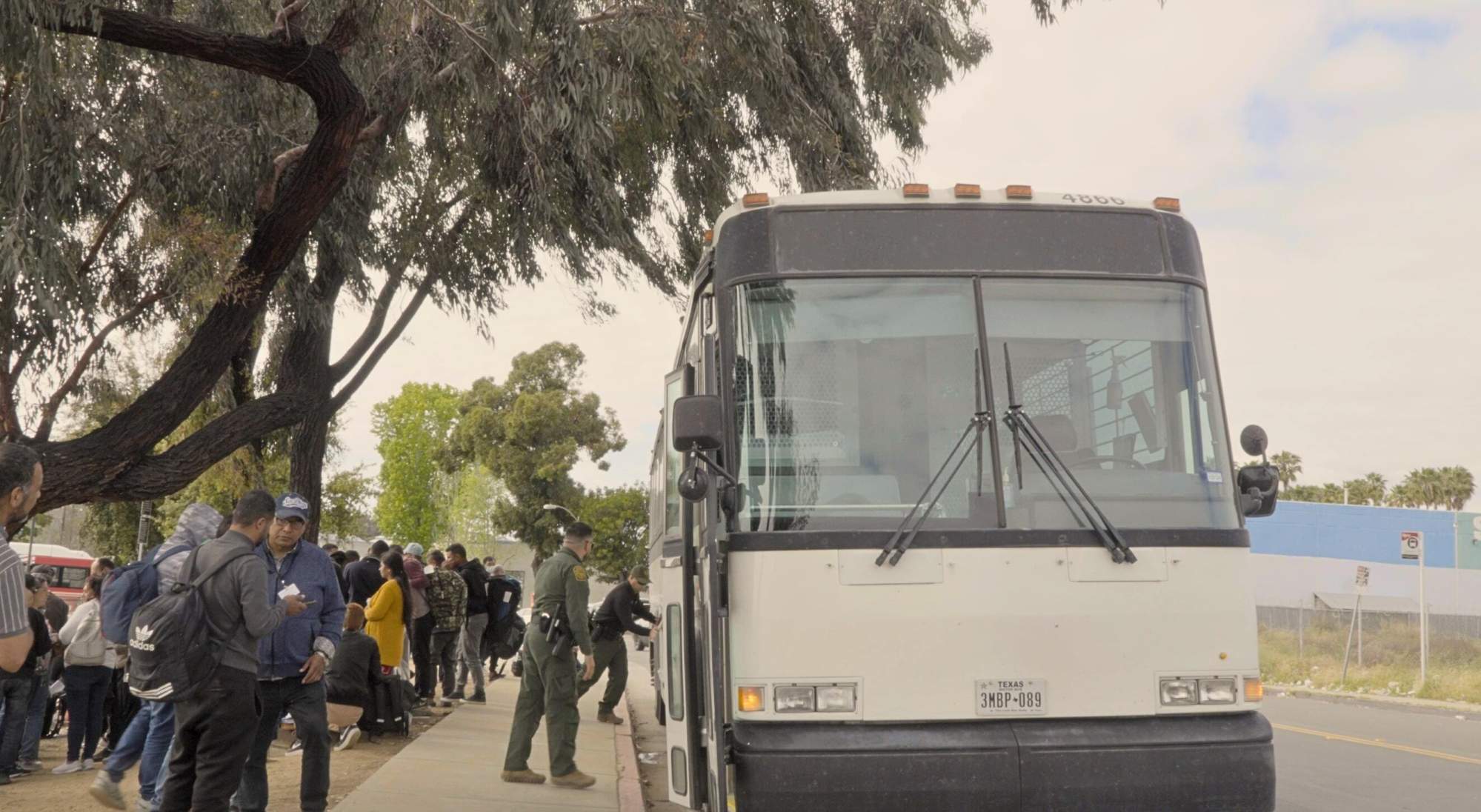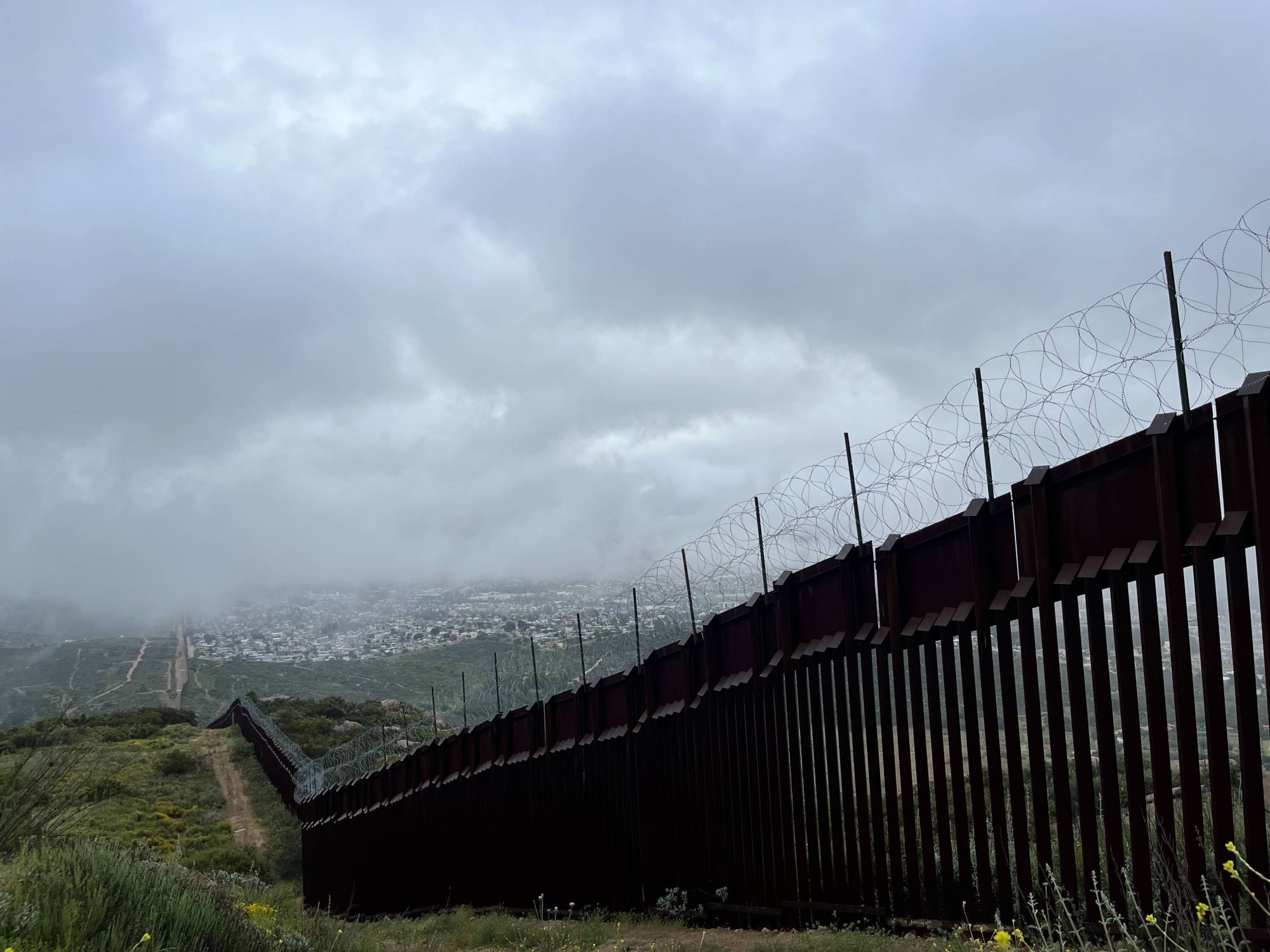At a bus stop near the Mexican border in San Diego, California, Chinese migrants waited with a mix of anxiety and anticipation for the US Border Patrol buses that arrived several times each day. For some, a bus’s arrival signalled a reunion with loved ones; for others, it marked the arrival of potential customers.
Many of those assembled in late April had recently made it out of immigration detention themselves, where they vied for cramped space and awaited “credible fear” interviews that would determine whether they were eligible for asylum – days after they illegally crossed into the United States from Mexico.
Some were held for only a few days, while others were stuck for weeks or months. Once they were released, buses took them to one of several drop-off points, where they were free to go anywhere in the US to file a claim for asylum.
Do you have questions about the biggest topics and trends from around the world? Get the answers with SCMP Knowledge, our new platform of curated content with explainers, FAQs, analyses and infographics brought to you by our award-winning team.
Pan, a border crosser from Hubei province who arrived with his wife eight days earlier, paced as he waited for her to be released from detention. He hadn’t heard from her since their phones were confiscated after they were apprehended by the Border Patrol. “The US isn’t kind to women,” he grumbled.
Pan was one of an estimated 16,270 Chinese nationals who illegally crossed the southern US border in the first five months of 2024, contributing to a total of about 50,000 who have done so since January 2023.
Chinese migrants make up a single-digit percentage of the overall number of illegal border crossers, according to US Customs and Border Protection, but they represented the fastest-growing group from 2021 to 2023.

Unlike their Latin American counterparts who make up the bulk of the border crossers, Chinese migrants flee the world’s second largest economy, and typically travel through three continents before making it to American soil.
Through treacherous routes like the Darién Gap previously taken only by Central and South Americans, they arrive with dreams for a better life and stories of hardship that are received with as much scepticism as acceptance.
For the first time in 25 years, San Diego has become a top entry point for migrants crossing the southern US border.
Every day, volunteers and vendors alike gathered around the stop in San Ysidro, a district in the city, ready to provide or sell services to the newly arrived migrants from all over the world. Fliers with post-arrival instructions in different languages, including Chinese, covered tree trunks near the stop.
But even among the volunteers, there were already signs that not all migrants were welcome. One of the Spanish-speaking volunteers pointed to Pan, suspecting that he was lying about his wife being detained. “I don’t trust them,” he said, referring to the Chinese migrants, citing a recent skirmish near the bus stop involving some of them.
Pan, meanwhile, expressed gratitude for the volunteers. One of the groups, a San Diego-based legal services non-profit called Al Otro Lado, had tried to help him find information about his wife, and he vowed to pay the kindness forward.
For the most part, however, new Chinese arrivals rely on other Chinese: familiar faces speaking familiar tongues offering to assist them in navigating their new life, though often for a fee.
Ding, also waiting for his wife to get out of detention, came to the US on a tourist visa from Jiangsu province in November and now ferries new arrivals to their intended destinations.
With a few months in the US under his belt, Ding runs a WeChat group for Chinese based in Los Angeles, where members share tips on avoiding scammers and access ads for anything from cheap housing to informal labour.
For US$70-80, Ding and other migrant drivers offer newcomers a lift to the greater Los Angeles area, the second largest hub for Chinese immigrants in the US, after the New York metropolitan area, according to one estimate.
Ding’s wife had crossed the border only a day earlier. She couldn’t get a tourist visa, he said, so they had no other option except to have her come illegally.

“If there was a legal path, who would want to take the illegal route?” Feng, a border crosser turned driver, chimed in.
Many of the recent Chinese border crossers decided to come to the US during the Covid-19 pandemic, enticed by social media posts of more entrepreneurial migrants who had already made the journey. But the posts could not fully prepare them for the journey ahead.
Chinese migrants recount a months-long journey fraught with cartel violence, scammers and other dangers like falling overboard from boats or running out of stamina.
On boats, horses, planes and buses, often with little more than a backpack, they traverse jungles and other terrain across over a dozen countries spanning Asia, the Middle East, and South and Central America. Some of them never make it. For most of them, it’s a journey they never want to repeat.
For the relatively privileged, overstaying a US visa is the safer route. But immigration specialists say US tourist visas for Chinese have become increasingly difficult to get, particularly during the Covid-19 pandemic.
According to the US State Department, combined tourist and business visa refusal rates for Chinese nationals went up to 79 per cent in 2021, before dropping to 27 per cent in 2023. In 2013, the refusal rate was only 8.5 per cent.
Chinese nationals, however, see a higher approval rate for asylum compared with migrants from Latin American countries. From October 2022 to September 2023, 55 per cent of Chinese applicants were successful, whereas Latin American asylum seekers saw approval rates of 28 per cent or lower, according to the US Department of Justice.
But asylum, while attractive in providing a path to permanent residence in the US, is far from easy to attain.
Every asylum seeker must demonstrate past or potential persecution on one of five protected grounds: race, religion, nationality, membership in a particular social group or political opinion.
Migrants typically have a year to apply for asylum, with lawyers’ fees ranging from a few thousand dollars to over US$10,000. Most try to file as soon as possible so they can get a work card.

Many Chinese migrants enter the US unaware of the complexities of the asylum process, said Felipe Alexandre, an immigration lawyer with offices in the City of Industry, near Los Angeles, and in New York City’s Flushing neighbourhood.
“It’s not enough to say, ‘The situation in China is tough’ or ‘Xi Jinping is bad.’ You have to demonstrate that the persecution is individualised,” he said.
And if they fail to do so, Alexandre added, they could be caught in a lengthy cycle of appeals, and ultimately left without legal work authorisation or forced to return to China.
While the US has long accused China of being uncooperative in efforts to repatriate Chinese nationals without legal status, the two countries have increasingly engaged in dialogue on the issue. In late June, with cooperation from Beijing, the US Department of Homeland Security chartered a removal flight carrying 116 Chinese nationals.
US President Joe Biden, in the midst of an election season, began escalating efforts to crack down on illegal migration in 2023. In early June, he signed an executive order that would suspend the processing of most asylum claims once the weekly average of unauthorised crossings exceeds 2,500.
The migrants gathered around the San Ysidro bus stop seemed unfazed by the political developments and potential denial of their asylum claims. “If I don’t make it here, I’ll go to Mexico,” said Feng, who filed his application after arriving from Guangzhou in January.
“I’m taking it one day at a time,” Pan said. This, he said, was his approach from the start.
“I had no idea how exactly I was getting to the US until I landed in South America; all I was focused on was getting out of China.”
Chinese border crossers often don’t have a singular reason for leaving China. Even in a single person or family, various factors drive their decision, spanning from political oppression to economic challenges.
Ding said he and his wife came primarily to improve their economic circumstances, but plan to make an asylum case based on suffering under China’s now-defunct one-child policy. “That must count as persecution, no?” he asked.
Pan’s primary motivations are more political. The Hubei native made over 10,000 yuan (US$1,380) a month, helping put his family solidly in the middle class, according to China’s National Bureau of Statistics.
Echoing the experiences of several migrants interviewed, Pan said he had increasingly grown disillusioned with how local Chinese authorities handled commonplace problems like workplace injury compensation.
Still, he said he would have stayed in China if not for public security officials restricting his movement after he filed a complaint.

“I love China,” he said. “But China doesn’t love me.”
And though he left China mainly for political reasons, Pan said he planned to keep a low profile in case he wants to return after getting legal status in the US.
“My parents are getting old and if they need me, I will go back, no matter the risks,” he said.
Unlike other families with young children, Pan made the difficult decision to leave his two children, aged 12 and 8, behind because of the dangers associated with the journey. He hopes to eventually bring them to the US.
Every migrant’s story is different, but what unites them is a deep fatalism about life in China, a desire to change their own circumstances and a somewhat blind optimism that things will turn out all right.
Asked if they thought they were courageous to make the journey, many said no. “Brave? No. If I was brave, I wouldn’t hesitate to participate in political protests here,” said Pan.
“Coming here wasn’t about being brave; we were forced by circumstance,” said Feng, who explained how local officials violated a contract with his business by dismantling one of its buildings, then jailed him for filing a petition.
For generations, he said, his family endured such adversity because of Chinese officials’ abuse of power.
Feng, who is single, keeps contact with his family over WeChat but lives in constant fear that they will be targeted by local authorities due to his absence.
Asked how he felt about his first few months in the US, Feng shrugged. “It is what it is,” noting that without a work card, he can engage only in informal labour under Chinese employers who might take advantage of him.
Despite being a border crosser himself, Feng cautioned others against placing immediate trust in fellow Chinese migrants.
Pan, still unburdened by the realities of his new life, said his American dream is simple: “I want to be a good refugee.”
“All I want is to work Monday to Friday and spend time with my family on Saturdays and Sundays.”
And by coincidence, as he was describing his plans for life in the US, Pan received a call from his wife. She had just been released from detention.
More from South China Morning Post:
- In a Los Angeles suburb, Chinese ‘border crossers’ with ‘no future in China’ seek a new life after harrowing journey
- Bodies of 8 Chinese migrants found on Mexico beach after boat capsized
For the latest news from the South China Morning Post download our mobile app. Copyright 2024.





